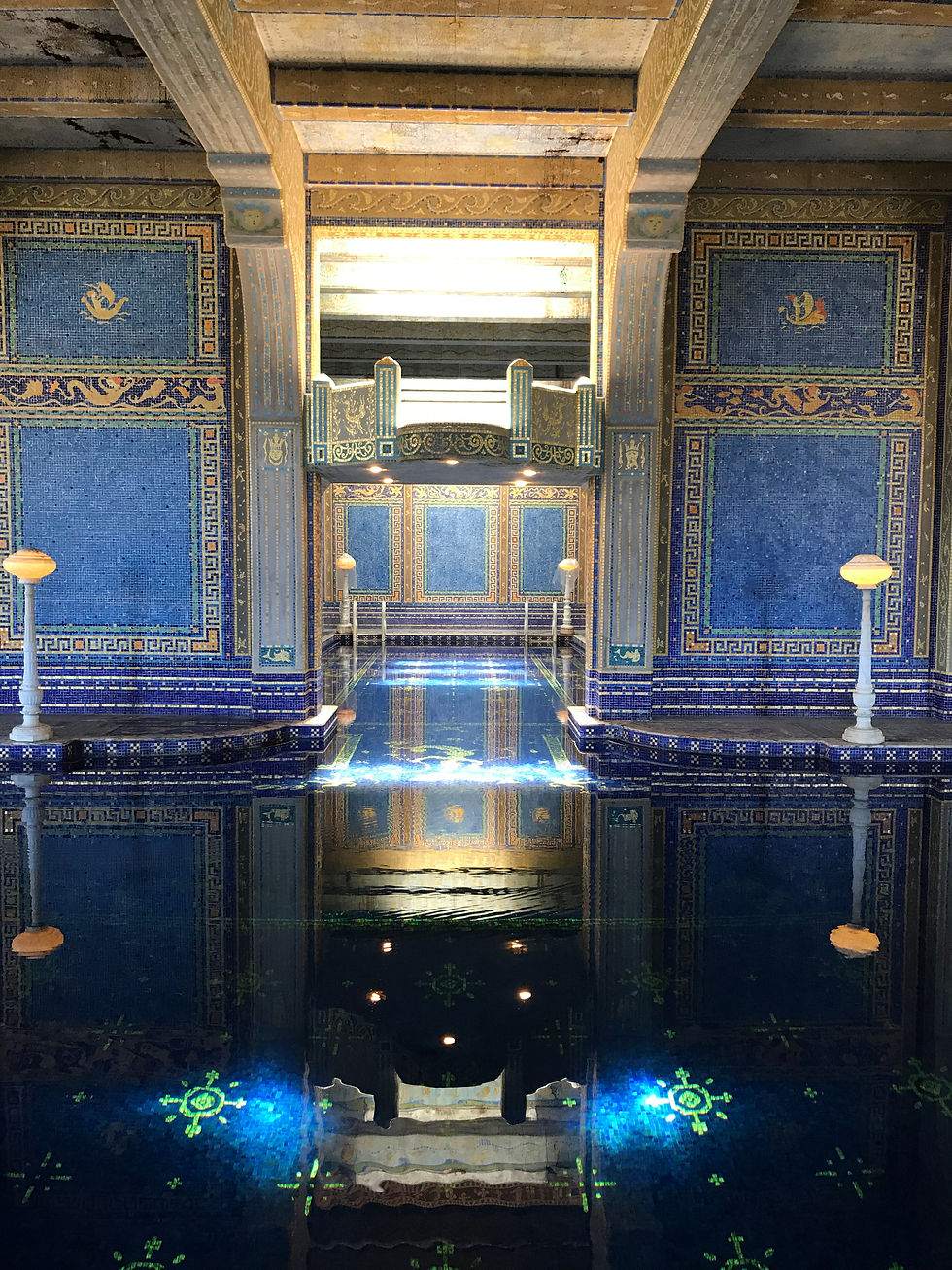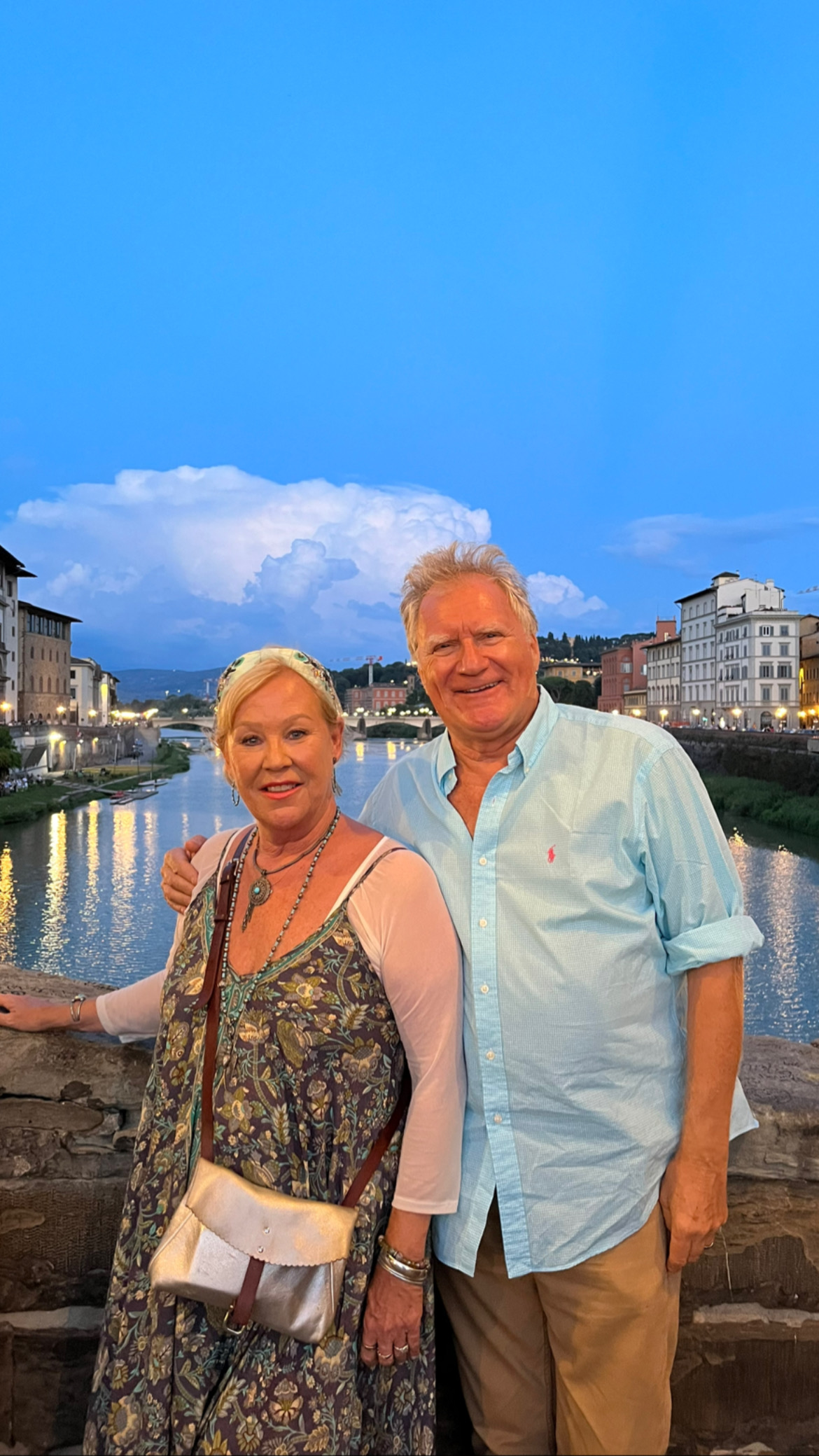52. HEARST CASTLE, SAN SIMEON, CALIFORNIA
- Des & Sandie Nichols
- Sep 4, 2022
- 5 min read
Updated: Jun 24, 2024

It is to the rich benefit of mankind that so many wealthy men have felt an irresistible need to leave an architectural and artistic legacy. Throughout history, kings and queens, pharaohs and emperors, moguls and maharajahs, usually in the second half of their lives, have commissioned the finest extravagances and collected the greatest paintings and sculptures as a permanent reminder of their own greatness and boundless riches.
Traditionally, these were built by monarchs and rulers who wished to leave a jaw-dropping, iconic memorial. In nearly every case, immense inherited wealth is commandeered to create an immortal shrine for us mere mortals to admire in memoriam.
In the New World, the same phenomenon exists but the whole definition of the glorious and rapid evolution of these enterprising lands is that their unimaginable wealth is not inherited from generations of rulers, but is freshly generated from Earth's natural treasures and modern man's own enterprise. So the near-history of America is set aglow by a handful of super-rich, self-made entrepreneurs - Rockefeller and Flagler with their oil, Vanderbilt with his railroads and shipping, Carnegie and his steel, Edison and his electricity and one William Randolph Hearst and his newspapers.
It will come as no surprise that W.R. is of particular interest. True, he did inherit considerable wealth from his father, George, who struck lucky with the Homestake Mine in the 1870's in the Black Hills of South Dakota - he bought with considerable risk into a failed gold mine and found silver, oodles of it. But he took his fortune much further and expanded his wealth. His family had come from humble stock; his grandparents had arrived penniless from Ireland and Scotland and young George was raised in a log cabin. But destiny and the American Dream had something better in store for the Hearst clan.
W.R.'s mother, Phoebe, was a very bright, attractive and impressive young girl, just 19 when she married the now millionaire George who was 20 years her senior. She doted on her only child and, when he was just 10, took him on her 'Grand Tour' of Europe. He was immediately mesmerized by the wonders of the museums and art galleries in London and the castles and great houses of England and Ireland. But it was Spain and Italy that completely captured his young imagination and memories of the Moorish designs of Southern Spain and the medieval religious icons of Rome left an indelible mark on his soul.
His loving widowed mother left William a handy $10 million on her death. His father had already given him control of the San Francisco Examiner when he was 24 but with his new fortune he quickly expanded his Press portfolio acquiring the New York Journal. Immediately, he was locked in a circulation war with Joseph Pulitzer's New York World. His tactic? Front page splashes (headlines) with lurid stories of sex and scandal of the famous. Remind you of anyone? Rupert Murdoch completely modeled his strategy on Hearst's 'yellow journalism' as it was called. Check-book journalism was born and its father was the bold young Hearst, known as the 'Chief' to all who had the privilege and sufferance of working with him. Soon he had a stable of great newspapers throughout the States, a chain of 30 in major American cities. He was a hands-on control freak, demanding to see every paper and letting his Editors know of any disapproval in brutal terms. I remember Kelvin MacKenzie, the hugely successful Editor of the Sun in the 80s, the UK's best-selling paper with a circulation of over 4m daily, telling me he had to call Rupert Murdoch in New York every single night before the paper went 'off-stone' (was printed) to tell him what the splash was. One particular headline displeased Murdoch, who paused and menacingly said simply "hardly worth cutting down a forest for", a reference to the thousands of miles of newsprint needed for every edition. Being a newspaper proprietor is an exercise in omnipotence. As my old boss, Lord Rothermere, used to say, "Des, I am never wrong. I am only wrongly advised".
So William Randolph Hearst became a very rich man indeed. His mother had also left him a huge swathe of land on the California Coast which the family had used as a ranch throughout his youth. It was their own private camping and horse-riding retreat. And it was here, overlooking the Pacific Ocean at San Simeon, that W.R. decided to construct his masterpiece. It took years. He started by finding a young lady architect in 1919, when he was 56. Her name was Julia Morgan and she was the first woman to study architecture at the School of Beaux-Arts in Paris and the first to have her own architectural practice in California.
Together, W.R. and Julia set about creating a glorious folly, a medieval palace, a celebration of his gargantuan success in the form a Spanish Colonial/Mediterranean Revival style castle. It all took over 20 years to become truly habitable even though the work continued until the mid 1940s. Halfway through, Hearst and his wife effectually separated and he set up with vivacious actress Marion Davies, who was in her 20s at the time. This was an unlikely but truly loving, enduring union that lasted until his death in 1951. The Catholic Mrs Hearst refused to divorce so William and Marion never married, but the undaunted W.R. and his Maid Marion joined forces creatively and physically at the hip.

The Castle sits on a hill surrounded by a quarter of a million acres of rolling hills that Hearst had acquired over the years. It is handy to be so rich that you can buy the view. The magnificent home is distantly but clearly visible from the ocean road, displaying its proud and unapologetic superiority and achieving its creator's ambition of reminding the world of his magnitude and magnificence. In addition to the gardens, cavernous reception and dining rooms, indoor and outdoor swimming pools, tennis courts, cinema, airfield and the world's largest private zoo, it has a mere 156 bedrooms to accommodate the eclectic flow of party guests. These included Presidents and movie stars. From Churchill and Roosevelt to Charlie Chaplin, from P.G. Woodhouse to Charles Lindbergh. The zoo had an equally impressive menagerie which included polar bears, Africa antelope and zebras (whose offspring are still grazing there today).
But enough. This is a case of 'let the pictures do the talking'. Below is a quick tour of the opulent and indulgent Hearst Castle, a sheer joy of extravagance and indulgence. We think the Chief would be delighted to know that millions of people every year stand in awe at his monumental edifice as they gawp in amazement amongst the statues.
After our visit, we now like the Chief. We loved his Castle. And having seen his excesses, we have now dismissed the dark Citizen Kane, arguably the greatest movie ever made, as a total misrepresentation of the man. He had just too much fun. And he left a massive publishing legacy in his own name. Here are just some of the titles that thrive today - Cosmopolitan, Country Living, Elle, Esquire, Good Housekeeping and Marie Claire.

Classical Entrance

The Plaza

The 'Neptune Pool'

The Girls

Main Reception Room

The Grand Dining Room with flags from the Palio horse race in Siena, Italy.

The Chief's Office and his Games Room (below)


The Cinema

W.R.'s Bedroom

One of three Guest Cottages

The Indoor Pool

The Tennis Courts
AND FINALLY...

Tour guides love throwing out questions that you just can't answer. It is their way of showing superior knowledge. So it was no surprise when visiting Mrs Hurst's bedroom (above), ours asked "what do you think the five wooden plugs at the foot of the bed do?" . There was silence. So she gave us a clue. "It has to do with ropes".
More silence. That was until Sandie, excited as a school-kid putting her hand up in class, yelled knowledgeably "To tie his wife up?". This time the silence amongst the dozen humorless American tourists was accompanied by an expression of shock.
"No dear" said the matronly guide. "The ropes were attached to support the mattress. Hence the expression 'sleep tight'".
I just beamed with the pride of Marquis de Sade.




Comments